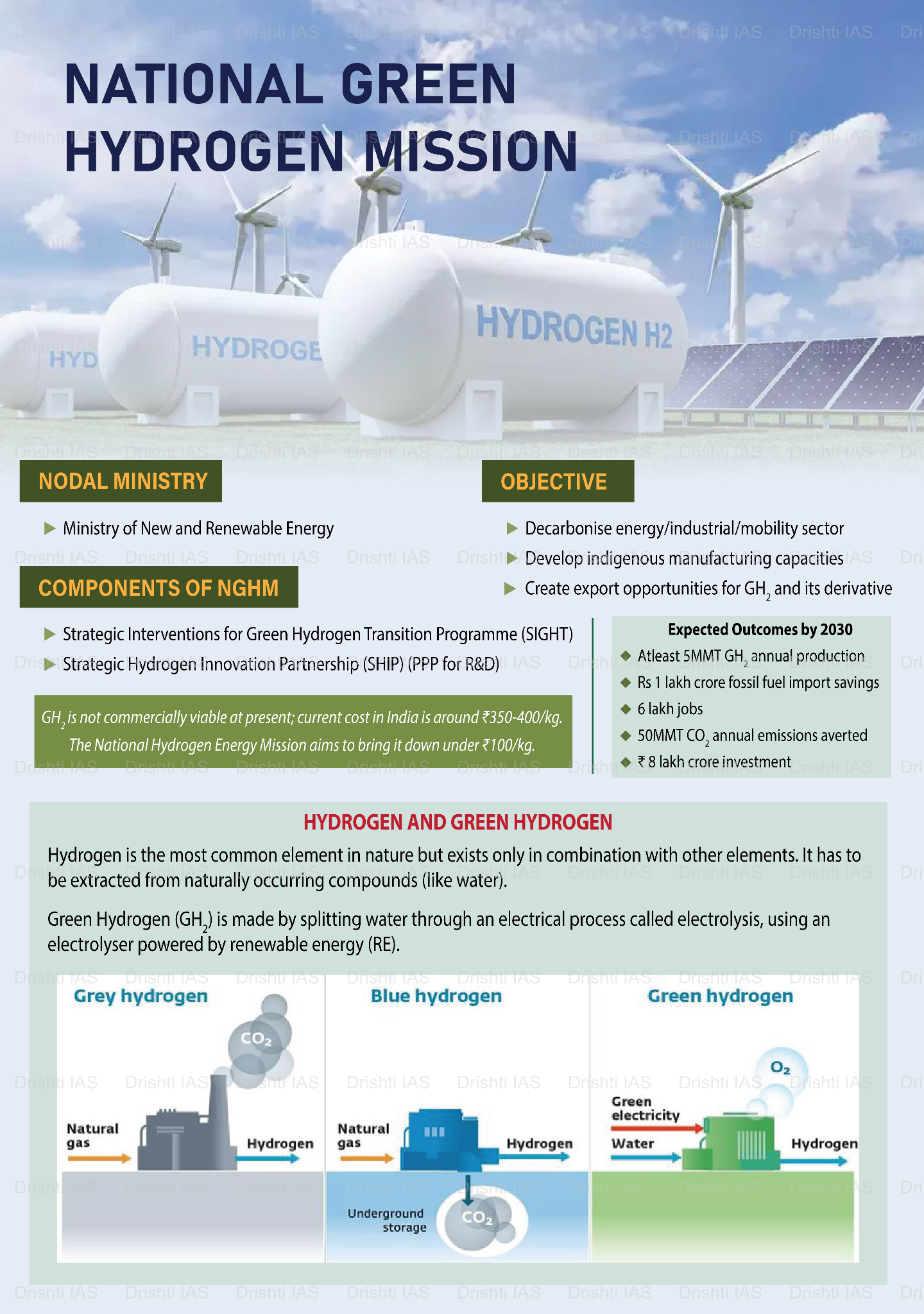Uttar Pradesh
Subsidies for Green Hydrogen Projects
- 07 Mar 2024
- 4 min read
Why in News?
Recently, the Uttar Pradesh cabinet approved its five-year Green Hydrogen Policy, earmarking 50.4 billion rupees (USD 608 million) for a subsidy programme to incentivise enough capacity for the 2028 target.
Key Points
- If successful, the policy would make up one fifth of India’s target of reaching five million tonnes of annual production by 2030, under its National Green Hydrogen Mission.
- This policy will target existing demand mostly in industrial processes such as chemicals and oil refining to replace grey hydrogen made using unabated fossil fuels.
- So far, hydrogen production technology has relied on gas, known as grey hydrogen. A significant effort is now under way to transition from grey hydrogen to green hydrogen.
- The policy outlines an ambitious goal to produce one million metric tonnes of green hydrogen annually within the next four years, by 2028.
- Producers, who will be granted fast-track environmental permitting, will also be eligible for a full rebate on transmission charges associated with using the intrastate grid, as well as full exemption from electricity tax (for ten years) and stamp duty.
- Fast Track Permitting incorporates a set of sound environmental policies and procedures that promote smart growth and economic development across the Commonwealth.
- The State government is also proposing to lease land for a single rupee per acre per year to state-owned enterprises setting up green hydrogen projects in the state.
- Private renewable Hydrogen investors will be eligible for a land lease rate of 15,000 rupees (USD 181) per acre per year.
Hydrogen
- Hydrogen is one of the most abundant elements on earth for a cleaner alternative fuel option.
- Type of hydrogen depend up on the process of its formation:
- Green hydrogen is produced by electrolysis of water using renewable energy (like Solar, Wind) and has a lower carbon footprint.
- Electricity splits water into hydrogen and oxygen.
- By Products: Water, Water Vapor.
- Brown hydrogen is produced using coal where the emissions are released to the air.
- Grey hydrogen is produced from natural gas where the associated emissions are released to the air.
- Blue hydrogen is produced from natural gas, where the emissions are captured using carbon capture and storage.
- Green hydrogen is produced by electrolysis of water using renewable energy (like Solar, Wind) and has a lower carbon footprint.
- Type of hydrogen depend up on the process of its formation:
- Uses:
- Hydrogen is an energy carrier, not an energy source and can deliver or store a tremendous amount of energy.
- It can be used in fuel cells to generate electricity, or power and heat.
- Today, hydrogen is most commonly used in petroleum refining and fertilizer production, while transportation and utilities are emerging markets.
- Hydrogen and fuel cells can provide energy for use in diverse applications, including distributed or combined-heat-and-power; backup power; systems for storing and enabling renewable energy; portable power etc.
- Due to their high efficiency and zero-or near zero-emissions operation, hydrogen and fuel cells have the potential to reduce greenhouse gas emission in many applications.







